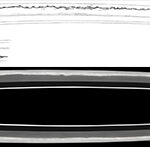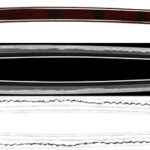Ordering number : 24196
Tachi in Shirasaya(NBTHK Tokubetsu Hozon Token)
Signature: Sanryu Masamine Saku Kore (Living National Treasure)
Heisei 5 Nen 2 Gatsu Hi (February, 1993)
傘笠正峯作之(人間国宝)
平成五年二月日
We divide 4 sections for each sword as Saijyo Saku, Jyojyo Saku, Jyo Saku, and Regular Saku.
This work is ranked as Jyojyo Saku for Masamine.
Polished.
Habaki: Gold-plated single
Blade Length: 74.4 cm (29.29 in)
Curvature: 2.5 cm (0.98 in)
Mekugi Hole: 1
Width at Base: 3.50 cm (1.38 in)
Width at Tip: 2.44 cm (0.96 in)
Thickness: 0.86 cm (0.34 in)
Sword Weight: 945 g
Era: February, 1993
Shape: Broad with thick and deep curvature, extended tip, and bo-hi (groove) on both sides.
Jigane: Ko-itame hada, well-knit and fine.
Hamon: Nioi-deki gunome midare, deep nioiguchi with ko-ashi entering, and irregular boshi.
Features: Sumitani Masamine, whose real name was Sumitani Yoichiro, graduated from the Mechanical Engineering Department of Ritsumeikan University in 1941. He apprenticed under swordsmith Sakurai Masayuki and established the Sanryutei Swordsmithing Studio in Matto City, producing numerous works. In the 1960s, he won the Masamune Award, the highest prize for new swords, three times. He was designated as a Living National Treasure on April 20, 1981, and recognized as a holder of Important Intangible Cultural Property in "Japanese Sword." Masamine also conducted research on steel and created his own tamahagane, perfecting the unique Sumitani-choji midare pattern. He crafted swords for the Imperial family, including a protective sword for the Emperor. He was regarded as the top modern swordsmith until his passing on December 12, 1998, at the age of 77. This piece is a powerful representation of the Kamakura Ichimonji style with a splendid jigane and the elegant Sumitani-choji hamon.
Aoi Art’s Comment: Sumitani Masamine was highly esteemed for his work for the Imperial family and his exceptional skills, particularly in creating the unique Sumitani-choji hamon and choji utsuri. He is continuously recognized as a prominent swordsmith who achieved the pinnacle of Japanese sword craftsmanship.
Historical Background:
1956: Opened Sanryutei Swordsmithing Studio in Matto
1957-1964: Continuously awarded at the New Sword Technology Presentation
1965: Won both the Honorary Chairman's Award and the Masamune Award
at the New Sword Exhibition; established the Ryosantei Swordsmithing Studio
1966: Won the Masamune Award again; also received the Mainichi Newspaper Award
1967: Appointed as an appraiser for the New Sword Exhibition; designated
an Intangible Cultural Property of Ishikawa Prefecture
1972: Won the first Kaoruyama Award
1974: Won the Masamune Award for the third time at the New Sword Exhibition
1981: Designated as a Living National Treasure
1984: Received the Purple Ribbon Medal
1990: Created the treasure sword for the Emperor's enthronement ceremony;
lectured at the British Museum's "Japanese Sword Exhibition"
1991: Made a protective sword for Princess Mako of Akishino
1992: Commissioned to make the sacred treasure sword
for the Ise Jingu Shrine's Shikinen Sengu ceremony
1993: Created a protective sword for Crown Princess Masako
1994: Made a protective sword for Princess Kako of Akishino
1998: Passed away on December 12 at the age of 77.
Aoi Art’s Comment: This magnificent work by Living National
Treasure Sumitani Masamine, with a blade length of 74.4 cm
and broad width of 3.5 cm, showcases a deep curvature.
It is likely one of Masamine's finest works and comes highly recommended.
NBTHK Tokubetsu Hozon Token
AoiArt estimation paper
Whole Oshigata
Order Form
Related Items:
 Tachi:Osumi Toshihira Saku 大隈俊平作 (NBTHK Tokubetsu Hozon Token)
Tachi:Osumi Toshihira Saku 大隈俊平作 (NBTHK Tokubetsu Hozon Token)
 Katana:Hizen Kuni Ju Oumi Daijo Fujiwara Tadahiro(NBTHK Tokubetsu Hozon Token)(consignment sale)
Katana:Hizen Kuni Ju Oumi Daijo Fujiwara Tadahiro(NBTHK Tokubetsu Hozon Token)(consignment sale)
 Katana: Seitan Ryuoji Minamoto Sadatsugu (NBTHK Tokubetsu Hozon Token)
Katana: Seitan Ryuoji Minamoto Sadatsugu (NBTHK Tokubetsu Hozon Token)
 Katana: Hoki Kami Ason Masayuki
Katana: Hoki Kami Ason Masayuki
 Katana :(Kiku Mon) Takai Echizen Kami Minamoto Rai Nobuyoshi (NBTHK Tokubetsu Hozon Token)
Katana :(Kiku Mon) Takai Echizen Kami Minamoto Rai Nobuyoshi (NBTHK Tokubetsu Hozon Token)
 Katana: Matsumura Masanao.
Katana: Matsumura Masanao.



